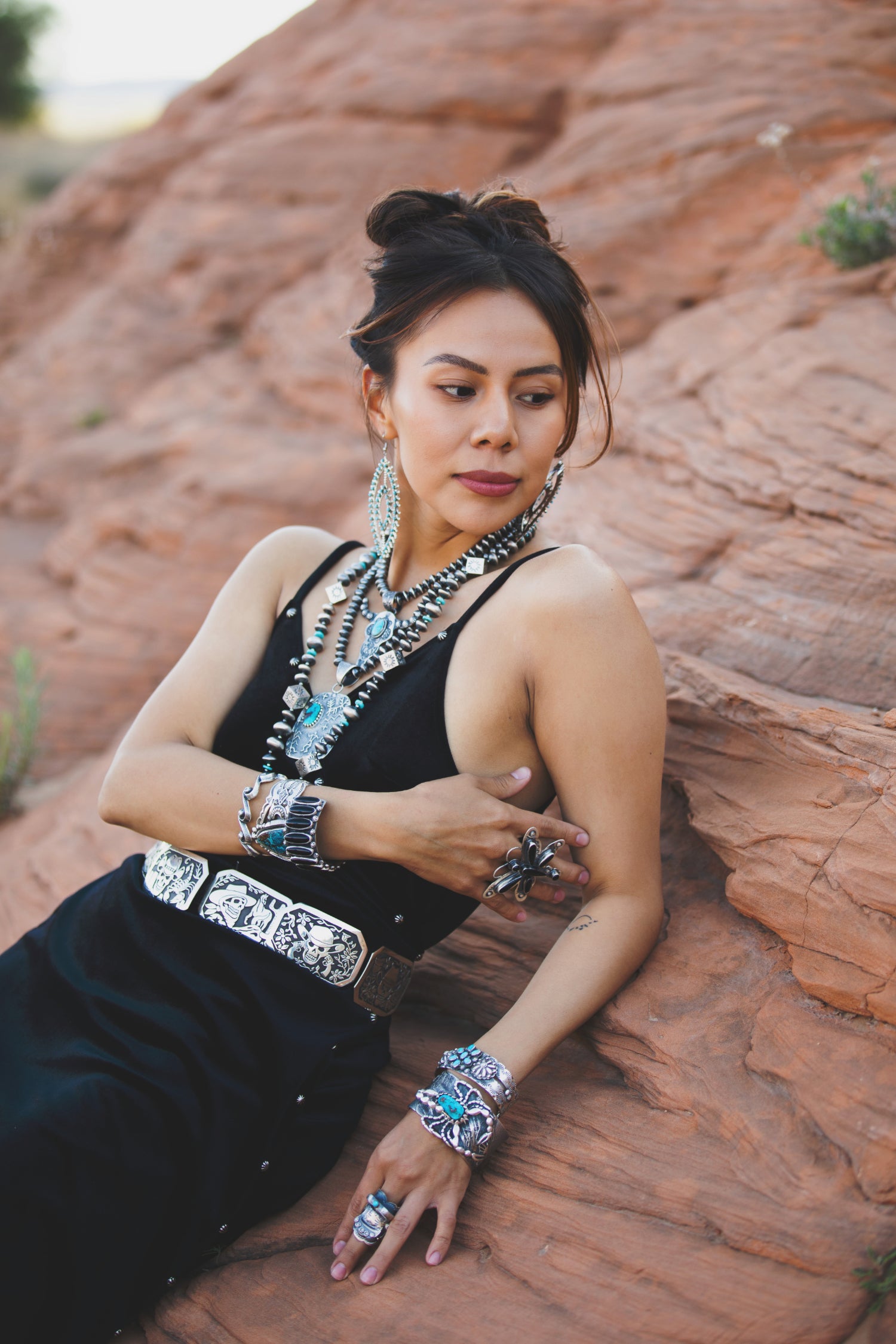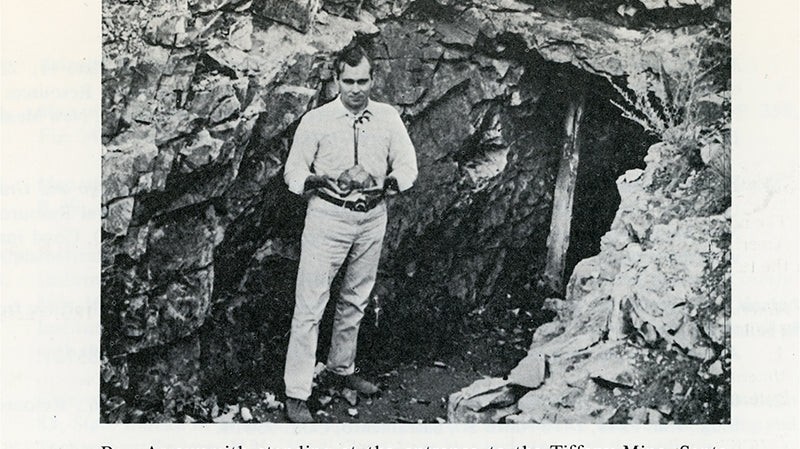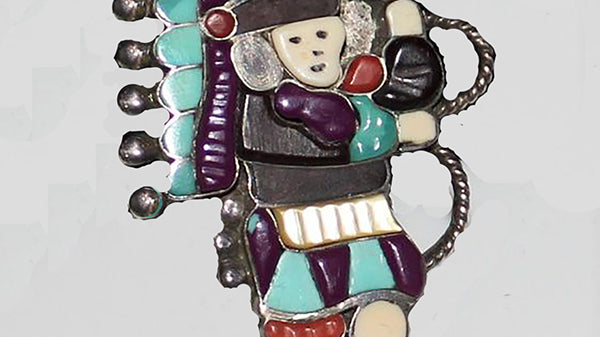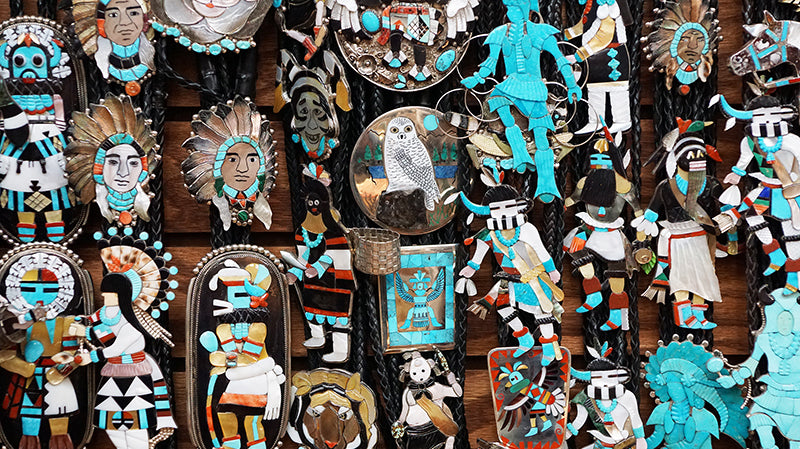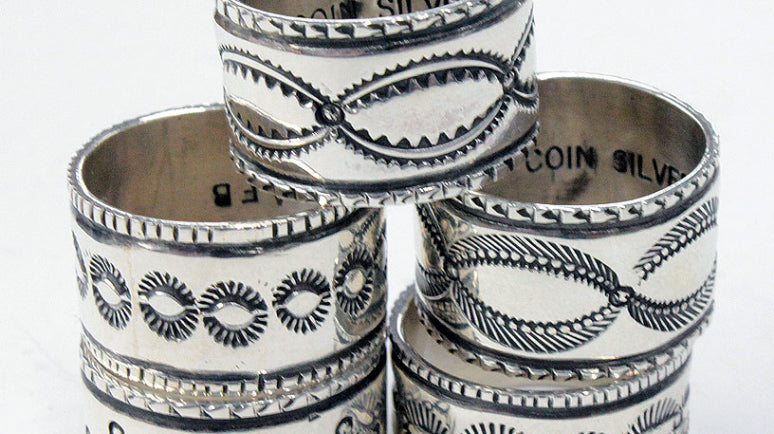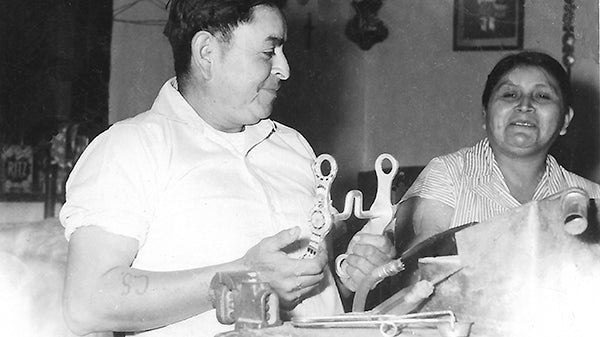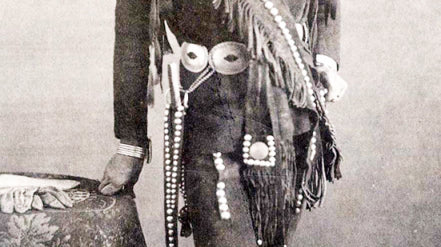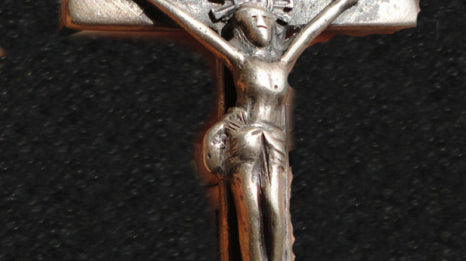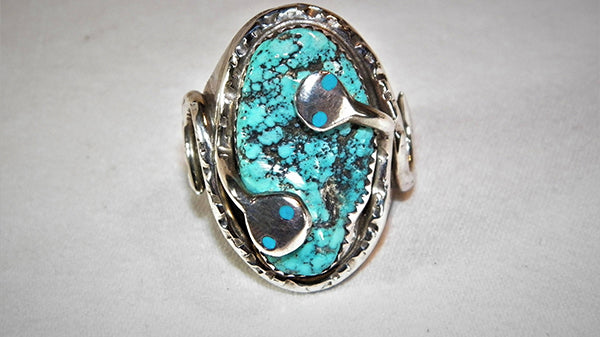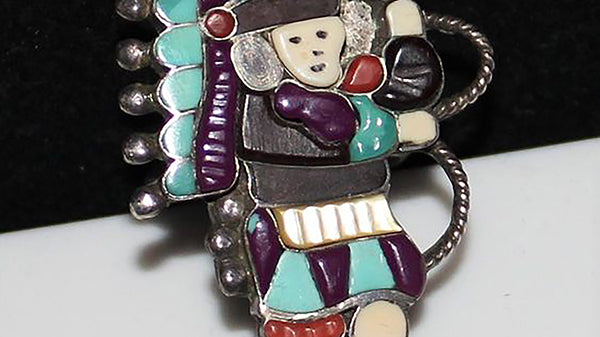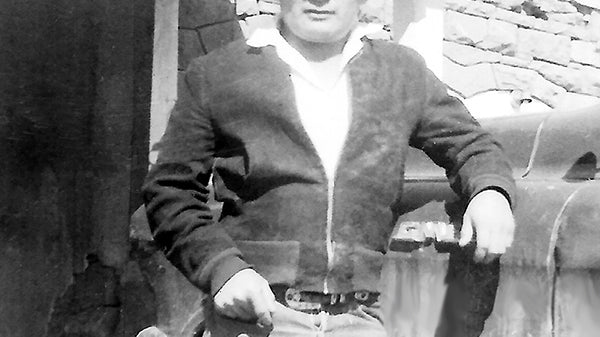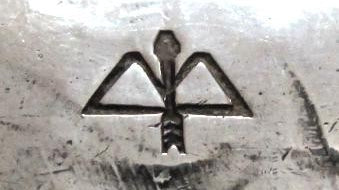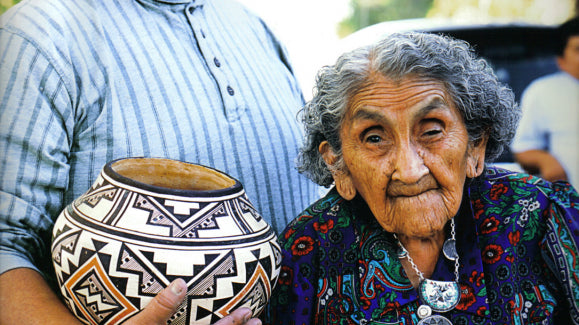Perry Null Trading
The Chalchihuitl (Turquoise) Question
This is the title of Chapter VI in the seminal book Turquoisby Joseph E. Pogue [who left the e off the end], published in 1915 by The National Academy of Sciences. More than 100 years later it is still a question.
The L.L. Mare's Nest
We complain all the time about so many silversmiths deliberately not signing their work well up into the Fifties and how nice it would be if everyone had marked their pieces, but that is not always correct. The signature of two letters LL has two or three takers at any moment, though the two most prominent ones are both gone.
Stampede Strings & Bolo Ties
The bolo tie has nothing to do with the Argentine throwing weapon that consists of three round stones tied together with leather thongs. With that thing around your neck you were in trouble. It was also not invented by some fellow in Arizona with a good imagination in 1940 something. In fact, the bolo tie has been around in some form for many years
Silver: Coin, German & Otherwise
Up front, we are talking about three hundredths of one percent between sterling and coin. In her 1936 pamphlet on Navajo silver, Margery Bedinger gives three lengthy paragraphs—half a page—to explaining the difference between sterling silver and coin silver.
Frank & Elizabeth Vacit
In the 1940 Federal census Frank Vacit (25) was living in the household of Old Man Leekya, married to his eldest daughter Elizabeth (21). Leekya was the only member of the family listed as a silversmith. Frank gave his occupation as “unpaid family farm worker” and his income for the year $180. But under “other income” he checked “yes”. There is no explanation.
The Fabled Zuni Turquoise Mine
Most chroniclers of the Spanish invasion, several attempts over two centuries, found the subject of turquoise irresistible. The Zunis were imagined long before they were found. The magic number was seven, and the Spanish tried over an over to find the “seven islands of Atlantis, seven great caves, and, of course, the “Seven Cities of Cibola” where there were vast stores of gold and turquoise. Boy were they disappointed.
Juan De Dios
The earliest Zuni maker of jewelry who can be identified with certainty is Juan De Dios, who taught his nephew Dan Simplicio Sr. and several other Zunis. Juan remains mysterious but Lee Weebothe remembers him well and has told me some great stories. There are two Juan De Dioses in the 1885 census, both born in 1876. De Dios manages to avoid being listed in most of the later censuses.
Snakes - History of Zuni Jewelry
While snakes do not qualify as a popular Zuni design they are interesting for that reason—why were they not more desirable?
Will the Real LL Please Stand Up
Playing the name game is often as simple as figuring out who a piece actually belongs to when it is marked by initials only. Except without a last name there isn’t much to work from. By now most people have learned that LL stands for Larry Laate, not Lavonne Lalio or Navajo Larry Livingston, Linette Laiwakete perhaps or any other fanciful attribution.
How to Get Famous Without Really Trying
There are a handful of famous Zuni jewelers who either never existed or did not make the jewelry they are famous for. How could this happen, you ask? Traders are always under pressure to put names to jewelry they are trying to sell. This also includes point of sale. Collectors can be very insistent and a familiar name is soothing. Traders also had to put names on jewelry they entered in various competitions.
The Confusion of Ike & Austin Wilson
For two men who were not even remotely related these two talented silversmiths have been inextricably intertwined. Several bits in their biographies may have added to the confusion. Both Navajos were born on the same part of the Reservation not far north of Zuni. Exactly where they were from is unclear because censuses list the place the material was collected. They both appear in the Southern Navajo Agency censuses.
Milford Nahohai
All Zunis grow up surrounded by art, but Milford Nahohai has probably done better than most. His family tree looks like more like a Christmas display. Wherever the family name came from, as it is written today it is the Navajo word for rodeo [originally chicken pull] a rather exciting event.

